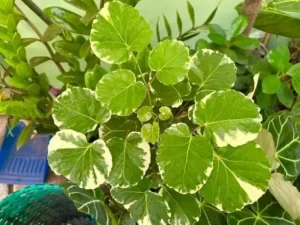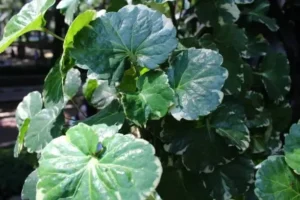Balfour Aralia Plant Care: Tips for Healthy Growth & Maintenance
The Balfour Aralia Plant Care, also known as the Dinner Plate Aralia, is a stunning evergreen plant native to regions of Africa, Asia, Australia, and the Americas. Its unique, leathery, round leaves, which measure 1″ to 2″ in diameter, resemble small dinner plates, giving the plant its popular nickname.
The foliage ranges in color from light green to dark green, with some varieties showcasing beautiful green and cream variegated patterns.
While the Balfour Aralia is a visually appealing addition to any indoor space, it is not recommended for beginner plant enthusiasts.
This plant is sensitive to overwatering, which can lead to root rot and cause its leaves to fall off. Proper care, including well-draining soil and moderate watering, is essential to keep this plant thriving.
Important Safety Note: The Balfour Aralia is considered toxic and should be kept out of reach of pets and children. If ingested, it can cause harm, so it’s crucial to handle this plant with care.

Balfour Aralia Plant Care
Light Requirements
Balfour Aralia plants thrive in bright, indirect light, making them perfect for well-lit indoor spaces. While they can tolerate low light conditions, it’s crucial to adjust your watering routine to prevent overwatering, which can harm the plant.
Watering Tips
Aralias have delicate, fine roots that are prone to overwatering. To avoid root rot, allow the top 1/2 of the soil to dry out completely before watering. During the winter months, when the plant is in its resting phase, reduce watering frequency. In low-light environments, your Aralia may only need water once a month.
Fertilizer Needs
Feed your Balfour Aralia every other month with a nitrogen-rich plant food to promote healthy growth. Always dilute the fertilizer to half the recommended strength to prevent over-fertilization, which can damage the plant.
Temperature Preferences
Balfour Aralias prefer consistent household temperatures between 65°F and 80°F. Avoid placing the plant in areas with cold drafts or sudden temperature fluctuations, as this can stress the plant.
By following these care guidelines, you can ensure your Balfour Aralia remains healthy and vibrant. Remember, this plant requires a bit of attention, but its unique beauty makes it a rewarding addition to your indoor plant collection!

- Humidity: Aralia plants thrive in high humidity, which promotes healthy growth. Low humidity can cause leaf drop, so maintain moisture levels for best results.
- Flowering: While Balfour Aralia rarely blooms indoors, it can be trained as a bonsai, making it an attractive houseplant.
- Pests: Watch out for common pests like mealybugs, spider mites, scale, and aphids. Regularly spraying with a biodegradable soap solution helps prevent infestations.
- Diseases: The primary disease affecting Aralia plants is root rot, usually caused by overwatering. Ensure proper drainage to keep roots healthy.
- Soil: Use a well-aerated, peat-based potting mix to promote quick drainage and prevent root rot.
- Pot Size: Keep Aralia plants in small pots to allow the soil to dry out faster and prevent overwatering issues.
- Pruning: Regularly prune the tips to maintain a full and bushy appearance.
- Propagation: Propagate Balfour Aralia through stem cuttings or air layering when temperatures exceed 70°F (21°C) for the best success rate.
By following these Balfour Aralia care tips, you can keep your plant healthy, pest-free, and thriving indoors.
Balfour Aralia Plant: Toxicity & FAQs
Poisonous Plant Information
Balfour Aralia is a toxic houseplant with a level #2 toxicity rating. All parts of the plant contain saponins, which can cause gastrointestinal irritation, nausea, vomiting, and diarrhea if ingested. Keep it away from pets and children.
FAQs
How Do I Know When to Re-pot My Balfour Aralia?
Balfour Aralia thrives in small pots since they allow the fine roots to dry out quickly, reducing the risk of root rot. Re-pot only when the roots have completely filled the existing pot.
Why Is My Balfour Aralia Dropping Leaves in Winter?
Aralia plants are highly sensitive to cold temperatures. If exposed to temperatures below 60°F (15°C), they will start dropping leaves. Keep your plant in a warm, stable environment to prevent this issue.
By understanding Balfour Aralia care, toxicity, and seasonal needs, you can keep your plant healthy and thriving year-round!
83ypsf
z9zkao